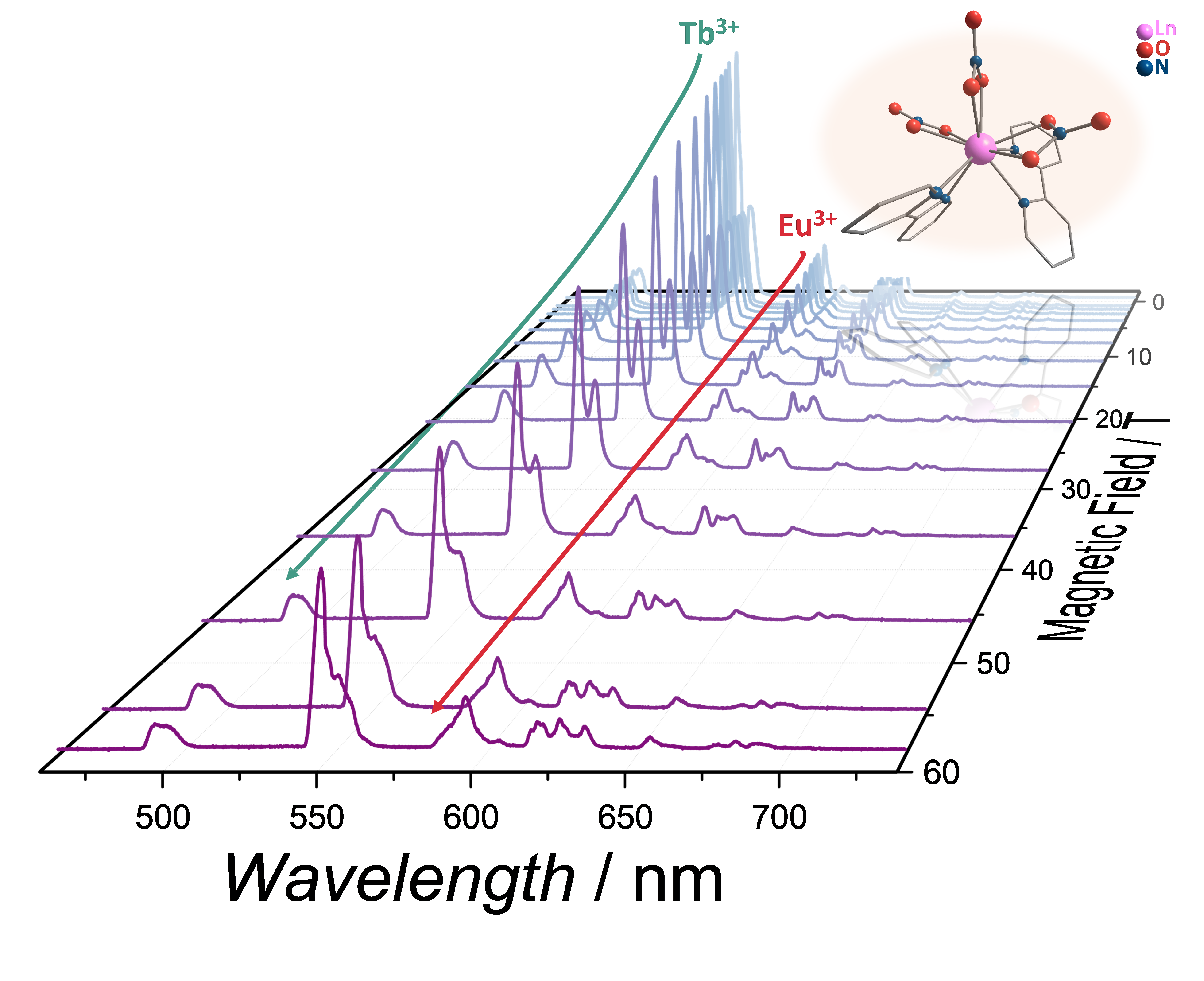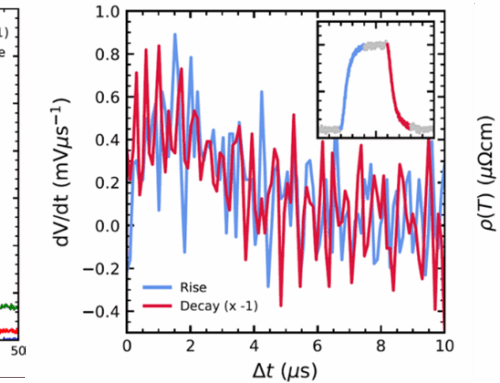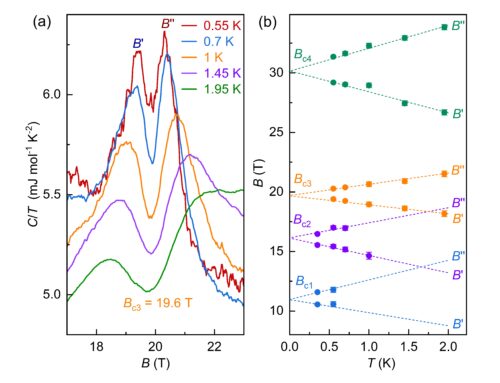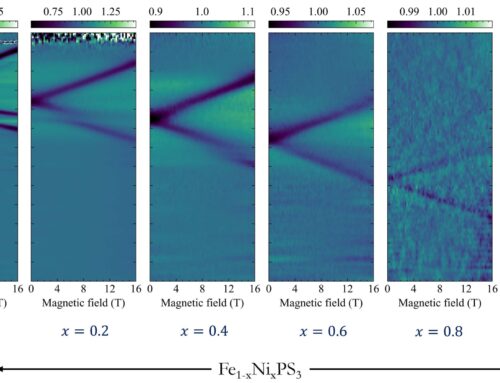Jérôme Long, ICGM, Montpellier, France, Luís D. Carlos, University of Aveiro, Portugal, Paulina Plochocka, LNCMI Toulouse.
Luminescence thermometry has gained significant attention as a versatile and non-invasive tool for remote temperature measurements in diverse fields, including nanomedicine, microelectronics, catalysis, and plasmonics. One of its perceived advantages is the presumed immunity to strong electromagnetic fields, making it seemingly ideal for use in environments, where conventional thermometers fail. However, this assumption lacks experimental validation, particularly for thermometers that rely on magnetic ions, such as lanthanides, which are known for their strong interaction with magnetic fields. Addressing this gap, our study investigates the thermometric performance of the molecular thermometer [Tb0.93Eu0.07(bpy)2(NO3)3] (bpy = 2,2′-bipyridine) under pulsed magnetic fields reaching up to 58 T.
Using a unique setup in LNCMI-Toulouse, we explored its luminescent response across a broad temperature range (2 – 290 K) and varying magnetic field strengths (up to 58 T). The widely utilized Tb3+ and Eu3+ emission transitions (5D4→7F5 and 5D0→7F2), highlighted in the figure, which are typically employed to define thermometric parameters, were found to exhibit significant correlations with both temperature and magnetic fields. This thermo-magnetic dependence compromised their reliability for accurate temperature sensing, even under relatively weak magnetic fields. To address this challenge, we employed Pearson correlation analysis to identify alternative electronic transitions that demonstrated minimal sensitivity to magnetic fields. This innovative approach allowed us to establish a new thermometric parameter capable of reliable temperature measurements in fields up to 20 T. Moreover, at temperatures exceeding 120 K, the molecular thermometer maintained operability under even stronger magnetic fields.
This work represents the first systematic evaluation of a luminescent-thermometer performance in extreme magnetic-field conditions, challenging the long-held belief in magnetic immunity. It highlights the material-specific nature of thermometric behavior and offers a robust framework for developing next-generation thermometers suited for high-magnetic-field environments.

Figure: Magnetic-field dependence of the luminescence of a molecular thermometer (shown in the inset)
Rethinking assumptions: Assessing the impact of strong magnetic fields on luminescence thermometry. M. Aragon-Alberti, M. Dyksik, C. D. S. Brites, J. Rouquette, P. Plochocka, L. D. Carlos, and J. Long, J. Am. Chem. Soc. 146, 33723 (2024).
https://pubmed.ncbi.nlm.nih.gov/39487792/
Contact: jerome.long@umontpellier.fr, paulina.plochocka@lncmi.cnrs.fr, lcarlos@ua.pt






